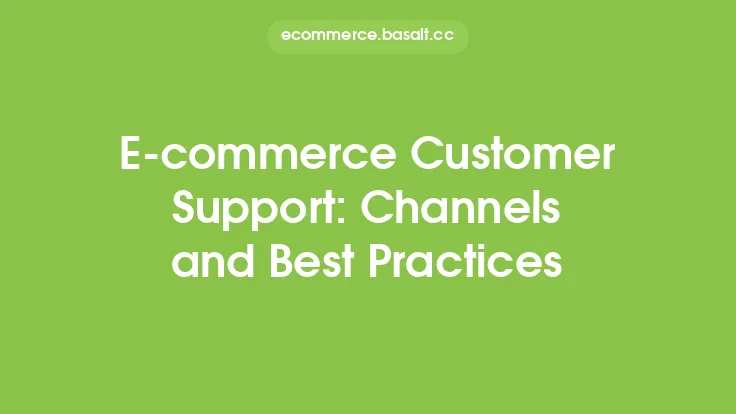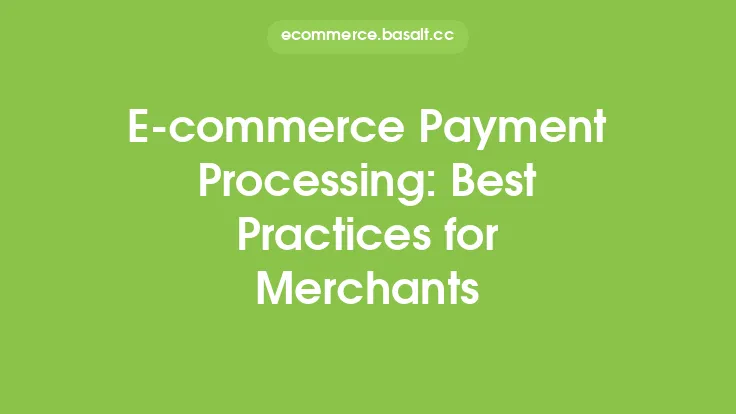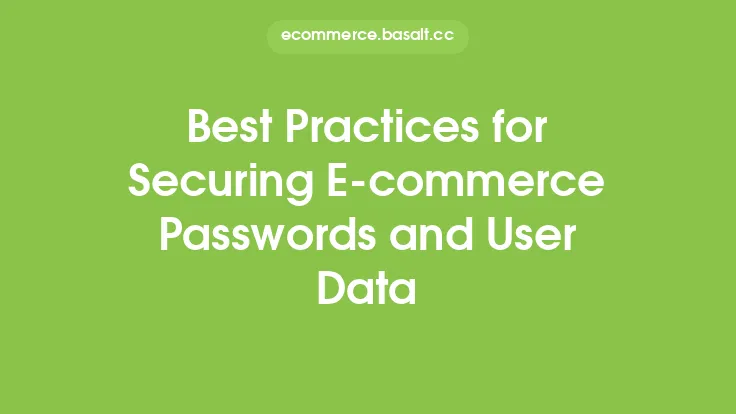The world of B2B e-commerce is rapidly evolving, driven by advances in technology, changing buyer behaviors, and the need for businesses to stay competitive in a global marketplace. As companies increasingly turn to online channels to purchase goods and services, it's essential to understand the trends and best practices that are shaping the B2B e-commerce landscape. In this article, we'll delve into the key trends and strategies that businesses can use to succeed in the world of B2B e-commerce.
Introduction to B2B E-commerce
B2B e-commerce refers to the online transactions between businesses, where one business purchases goods or services from another. This can include everything from raw materials and components to finished goods and services. B2B e-commerce is distinct from B2C (business-to-consumer) e-commerce, where businesses sell directly to individual consumers. The B2B e-commerce market is significant, with estimates suggesting that it will reach $1.8 trillion by 2025, surpassing the B2C e-commerce market.
Key Trends in B2B E-commerce
Several trends are driving the growth and evolution of B2B e-commerce. These include:
- Digital transformation: Businesses are increasingly adopting digital technologies to streamline their operations, improve efficiency, and enhance customer experiences.
- Personalization: B2B buyers expect personalized experiences, similar to those they encounter in their personal lives as consumers.
- Mobile optimization: With more B2B buyers using mobile devices to research and purchase products, businesses must ensure that their websites and online platforms are mobile-friendly.
- Omnichannel engagement: B2B buyers interact with businesses through multiple channels, including social media, email, phone, and in-person. Businesses must provide seamless, integrated experiences across these channels.
- Data-driven decision-making: B2B buyers rely on data and analytics to inform their purchasing decisions. Businesses must provide access to relevant data and insights to support these decisions.
Best Practices for B2B E-commerce
To succeed in B2B e-commerce, businesses should adopt the following best practices:
- Develop a robust online platform: A user-friendly, mobile-optimized website or online platform is essential for B2B e-commerce. This platform should provide easy access to product information, pricing, and inventory availability.
- Implement a customer relationship management (CRM) system: A CRM system helps businesses manage customer interactions, track sales, and provide personalized experiences.
- Offer flexible payment options: B2B buyers may require flexible payment terms, such as net 30 or net 60 payment plans. Businesses should be prepared to offer these options to support customer needs.
- Provide excellent customer service: B2B buyers expect high-quality customer service, including responsive support, timely communication, and proactive issue resolution.
- Invest in digital marketing: Digital marketing, including search engine optimization (SEO), pay-per-click (PPC) advertising, and social media marketing, helps businesses reach and engage with B2B buyers.
B2B E-commerce Platform Options
Businesses have several options when it comes to B2B e-commerce platforms. These include:
- Custom-built platforms: Some businesses prefer to build custom platforms tailored to their specific needs.
- Commercial platforms: Commercial platforms, such as Magento and Shopify, offer a range of features and functionalities that can be customized to meet business needs.
- Cloud-based platforms: Cloud-based platforms, such as Salesforce Commerce Cloud, provide scalability, flexibility, and cost savings.
- Open-source platforms: Open-source platforms, such as WooCommerce and OpenCart, offer flexibility and customization options, but may require more technical expertise.
Security and Compliance in B2B E-commerce
Security and compliance are critical considerations in B2B e-commerce. Businesses must ensure that their online platforms and transactions are secure, and that they comply with relevant regulations, such as the General Data Protection Regulation (GDPR) and the Payment Card Industry Data Security Standard (PCI DSS). This includes:
- Implementing robust security measures: Businesses should implement robust security measures, such as encryption, firewalls, and access controls, to protect customer data and prevent cyber threats.
- Conducting regular security audits: Regular security audits help businesses identify vulnerabilities and ensure compliance with relevant regulations.
- Providing transparency and disclosure: Businesses should provide clear transparency and disclosure about their security and compliance practices, including data collection, storage, and use.
Conclusion
B2B e-commerce is a rapidly evolving landscape, driven by advances in technology, changing buyer behaviors, and the need for businesses to stay competitive. By understanding the key trends and best practices in B2B e-commerce, businesses can develop effective strategies to succeed in this market. This includes developing robust online platforms, implementing customer relationship management systems, offering flexible payment options, providing excellent customer service, and investing in digital marketing. By prioritizing security, compliance, and customer experience, businesses can build trust and loyalty with their B2B customers, driving long-term growth and success.





